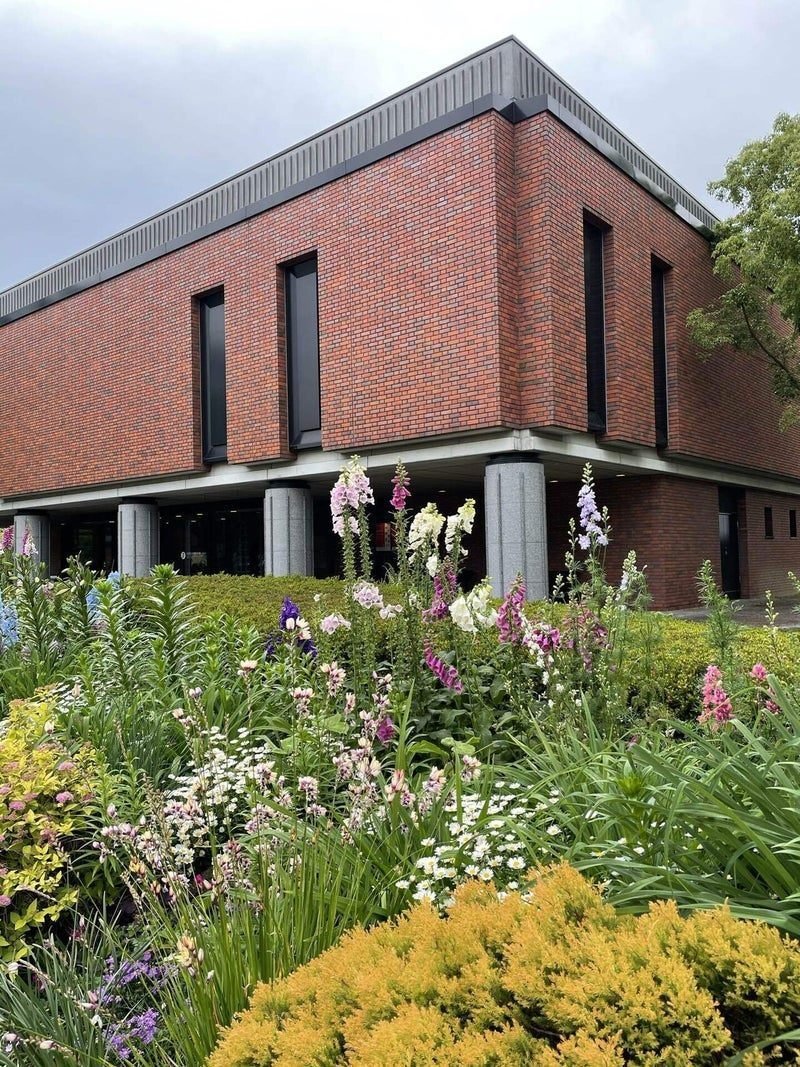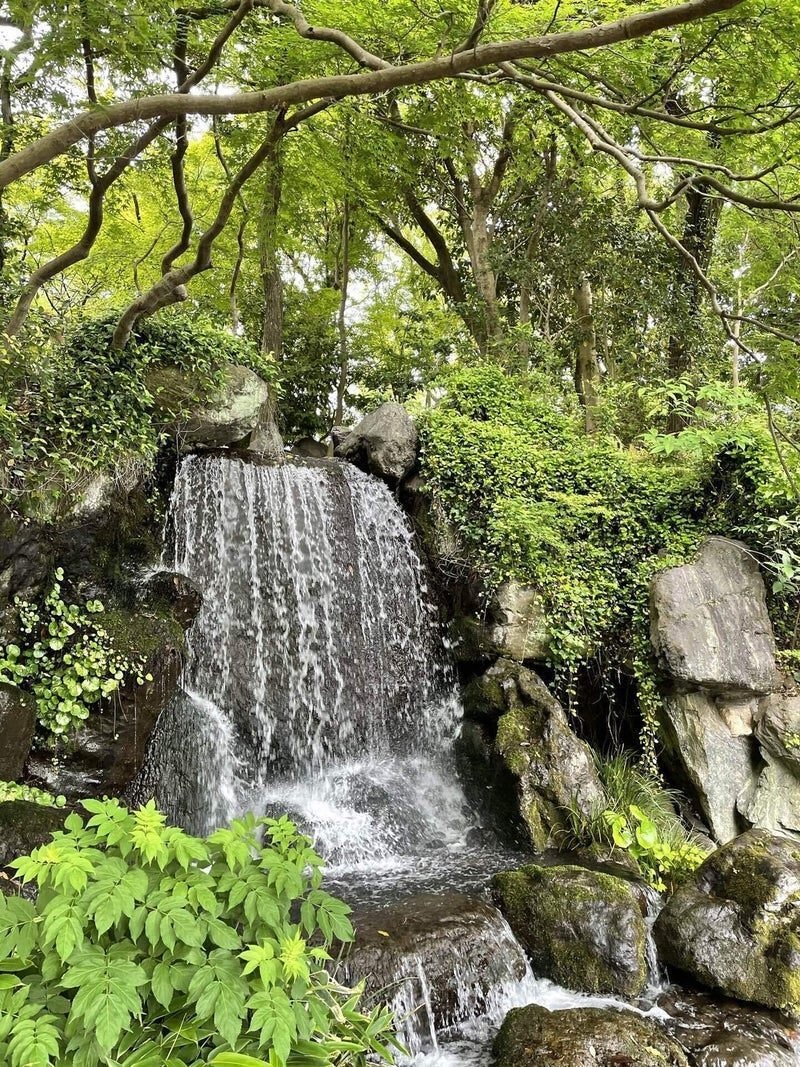
Shojiro Ishibashi and Kurume, Mount Saint-Victoire and Rakusuitei.
2021/05/06
Kurume is not located by the sea. The Chikugo River, a first-class river that flows from Mount Aso to the Ariake Sea, meanders through this town. Geographically, Kurume is located at the intersection of a line that connects northern to southern and western to eastern parts of western Kyushu, and if you were to trace the shape of Kyushu on a map in the form of a human body, Kurume would be located around the left lung.
It was here, 90 years ago, that a company that would later become a world-renowned corporation was founded - Bridgestone.
The founder of Bridgestone, Shojiro Ishibashi (1889-1976), developed rubber-soled tabi (Japanese traditional socks) as a replacement for the straw sandals (waraji) that were worn by workers in coal mines, shipyards, and steel companies during the 1920s. He achieved global success by manufacturing and selling rubber tabi and shoes. In 1931, he challenged the tire business as a new venture and invested a large amount of money in developing domestic tires, despite opposition from those around him, convinced of the wave of motorization. Shojiro expressed his determination to his executives at the time in the following words:
"We consider the production of automobile tires to be our new business, and as rubber industry professionals, it is our mission to ensure its success. I am not just concerned with my family or my company, but I have an ideal to work greatly for the sake of the country. My business philosophy is that a business that only focuses on profits will inevitably perish without sustainability, but a business that benefits society and the nation will thrive forever."
Bridgestone has now surpassed 3 trillion yen in sales and has become a global company with business operations in 150 countries worldwide. It can be understood that this is a realization of Shojiro's belief that businesses that benefit society and the nation will thrive forever.
In the Edo period, Kurume was a castle town with a population of 200,000, and Shojiro took over his father's tailoring business at the age of 17, despite his father being a former samurai who was not a skilled merchant. He then modernized the apprenticeship system and incorporated modern management techniques, ultimately growing into a successful business leader.
Bridgestone's Kurume factory still stands on the banks of the Chikugo River today. Even after moving the company's base to Tokyo in the 1930s, Shojiro continued to devote himself to the development of his hometown. He hoped that Kurume would become a "fun cultural city". He believed that if the company was not accepted by the local community, it could not become an international enterprise. In an era before the term "regional revitalization" was coined, I believe there is much to be explored in his vision for a local city and the relationship between the company and the local community.

On this occasion, I visited one of the dreams that Shojiro Ishibashi envisioned, the "Ishibashi Cultural Center." The rose garden was in full bloom, and it was clear that this is a place where citizens gather to relax. It takes about 15 minutes on the Kyushu Shinkansen from Hakata to Kurume, and about 30 minutes by limited express.
By the way, did you know that Kurume has produced many famous people who are currently active? Some representative names include Fumiya Fujii, Seiko Matsuda, Katsuya Yoshioka, Leo Ieiri, among others in the entertainment industry. As for entrepreneurs, there are Horie Mon, who graduated from Kurume Dai-fusetu High School, and Masayoshi Son, among others. (By the way, Shojiro donated buildings and land for the establishment of Kurume University in 1928.)
The "Ishibashi Cultural Center" currently consists of a museum, a memorial hall, a music hall, a garden, and other facilities. Shojiro donated it to Kurume City in 1956, hoping to enhance the cultural facilities of his hometown. Ishibashi's statement, "For the welfare and happiness of all mankind" is engraved on a stone tablet at the entrance of the center.

Shojiro wrote in his book that his hobbies were art, architecture, and gardening. His collection of Western paintings after the impressionist period is open to the public at the newly opened "Artizon Museum" in Kyobashi, Tokyo. I also recently learned that the land and building of the National Museum of Modern Art in Tokyo's Kita-no-Maru Park were donated by Ishibashi to the country.
In his book, it is mentioned that after the war, he developed a deep friendship with Rockefeller from the United States, and the two agreed that "it is harder to spend money than to earn it." In Japan, where accumulating "intoku" (hidden virtues) is considered a virtue, it is rare for someone to spend so much money on cultural activities without being criticized. This was also noted in a biography of Ishibashi.

Now, let's go back to the discussion about the cultural center. Shojiro is said to have favored Western-style living and Western art and architecture, but it is highly likely that he preferred Japanese-style gardens, as seen from my personal impression of the Japanese garden at the center, called "Rakusuitei." And the highlight of this center was the garden.
"I have enjoyed gardening as a hobby for a long time. However, I am not particularly knowledgeable about the techniques of garden design. I simply feel that my mind and body are purified when I am surrounded by the beautiful scenery of nature. So, I have been enjoying the creation of a natural landscape by planting trees, collecting stones, piling up soil, and drawing water within a limited space, and looking forward to the development of its charm over the years. There is an old saying that 'a wise man enjoys water,' and I have recently found joy in the completion of a Japanese garden being built inside the Ishibashi Cultural Center, which includes a building by the water's edge called Rakusuitei. This is my recent delight," Shojiro said in his speech at the completion of the garden.

Furthermore, in his writings, Shojiro also left the words, "What I think about landscaping is that pine trees are pine trees, and bamboo is bamboo. Each one lives on its own. Only by giving way to each other and standing together can we create a beautiful garden. Standing stones and sitting stones are truly alive." In this frank expression of his thoughts on landscaping, we can see a glimpse of Shojiro's philosophy on life and management.
Shojiro's practice of contributing to society through various cultural activities and donation acts was forward-thinking and served as a precursor to the modern concept of corporate social responsibility. In the future, it would be beneficial to further study the examples of Kurume and Bridgestone in terms of corporate social contribution.
As regional revitalization is being sought and the issue of Tokyo's concentration of power has been pointed out for some time, the COVID-19 pandemic has once again highlighted these issues, and companies and governments are being forced to transition from their previous models.
In the United States, it is said that the headquarters of major companies are dispersed in regional cities. In Japan, there are also global companies with bases in regional cities, although they are few in number. In the future, it will be interesting to watch whether there will be a more active movement to relocate headquarters to regional areas or to decentralize government agencies.
In the case of Kurume, Shojiro Ishibashi, and Bridgestone, they express the harmony of the whole, like the pine trees, bamboo, and stones in a Japanese garden, where local cities, business owners, and corporations support and cooperate with each other. In the future, I hope that many companies will refer to the example of Kurume when considering relocation to local areas.
The cover of Shojiro's memoir "Recollections" features Cezanne's "Mont Sainte-Victoire and Chateau Noir" (held by the Artizon Museum). It is presumed that this is one of his favorite paintings. I wonder if he ever compared the scenery of the Japanese garden viewed from "Rakusuitei" with this painting, it makes me curious.

The painting by Cezanne never fades and it's certain that Shojiro admired it every time he saw it. However, the appearance of the Japanese garden changes its charm over time. Perhaps he enjoyed new discoveries and surprises every time he visited there. And the scenery of this garden was one of the reasons why Shojiro wanted to return to his hometown... While sitting on the terrace of Rakusuitei and indulging in such thoughts, I stayed for quite a long time. Wrapped in the scent of roses, I left the center with a feeling of gratitude.

この記事が気に入ったらサポートをしてみませんか?
